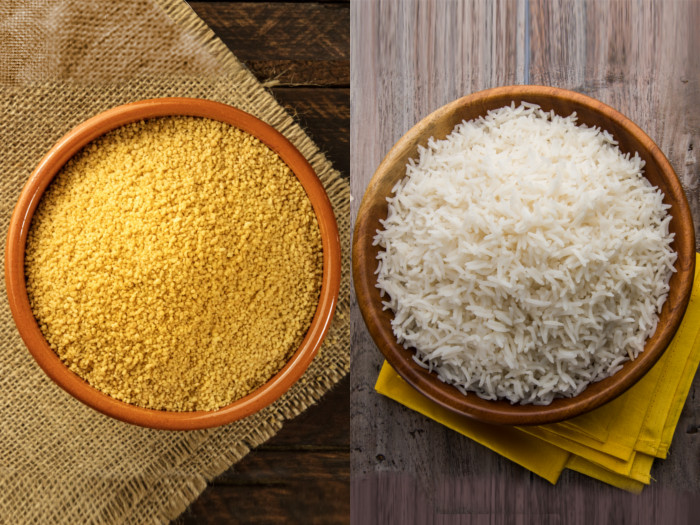In the debate of couscous vs rice, there isn’t a clear winner, but there are some obvious differences that any healthy eater should understand!
Couscous vs Rice
Couscous and rice may look similar, but they are definitely not the same in terms of nutrition, uses and health benefits.
Couscous
- Couscous is a form of pasta, and not a grain, which many people falsely believe.
- Couscous is composed of steamed balls of rolled durum wheat semolina.
- In terms of nutrition, couscous is quite high in protein, providing more than 10% of our daily requirement in a single cup. It is also quite high in dietary fiber, with more than 2 grams in every cup. This is in addition to smaller amounts of magnesium, vitamin B6, iron, and calcium. [1]
- A cup of this Middle Eastern pasta also contains roughly 175 calories, as well as various phytonutrients and antioxidants that can improve overall health and reduce chronic inflammation. [2]
- Couscous is often used as the base for meat, sauces, curries, vegetables or fruit.

Couscous vs white rice Photo Credit: Shutterstock
Rice
- Unlike couscous, rice is a type of grain and is actually the seed of a grass species, typically Oryza sativa or Oryza glaberrima. [3]
- When it comes to nutrition, rice delivers more than 4 grams of protein per cup, as well as a smaller amount of dietary fiber – only about 2% of the daily requirement.
- One cup of rice also has just over 200 calories, and a similar composition of nutrients, including calcium, iron, magnesium and vitamin B6, although all of those nutrients are in lesser concentrations than are found in couscous. [4]
- Rice may be the most widely consumed food staple in the world, but in comparison to couscous, it is not as nutrient dense, nor does it have as many health benefits.
